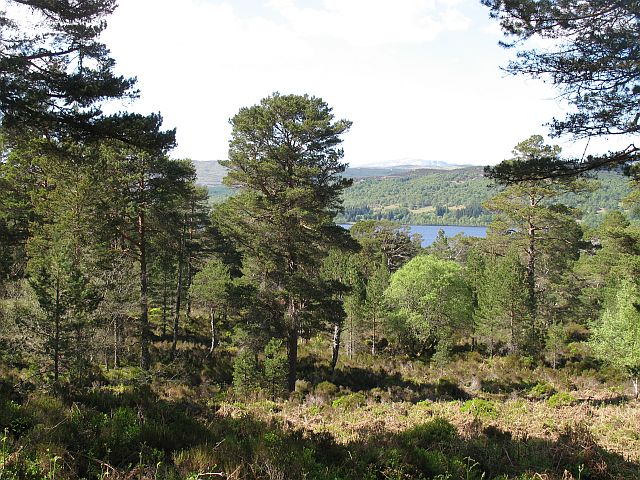The Great Wood of Caledon
There are few places in Scotland that can bring piece of mind and a sense of solitude than deep in the heart of the Ancient Caledonian Pineforest; a wonderfully tranquil landscape of Scots Pines, Birches and myriad of other flora and fauna. Whenever I get home to Highland Perthshire I tend to go for a walk in the Black Wood of Rannoch, one of the best preserved of all our native pine woods, and I have to say it’s a great battery-charger, especially at this time of year when the sun dances on the autumn colours. Sadly, these forests are few and far between – yet, they provide us with a unique opportunity to see through the looking-glass to world we almost lost.
As well as the Black Wood, substantial sections of the old forest are also to be found in Glen Affric, the Cairngorms, in upper Deeside and in small patches across the Highlands. Collectively the expanse today of this unique environment is restricted to around 40,000 acres, about 1% of the forest’s original scope. These last remnants form the western fringe of the Eurasian Boreal Forest: dense woodlands that cover much of Scandinavia and northern Russia; and, have remained more or less intact since the end of the last Ice Age
The Eurasian Boreal Forest
In the centuries that followed the final melting of the ice 10,000 years ago, the British Isles became covered in a great forest, known in our folk memory as the Wild Wood. This was the landscape of fairytales: full of big, bad wolves, witches and green men; a place to be feared, respected and tamed. Reflecting Britain’s north-south climate and relative altitude displacement the Wild Wood morphed from oak, lime and elm in the south to the ubiquitous pines and birches in the north. As well as the trees, juniper bushes and heathers, intermixed with grasslands and marsh, this arboreal realm was home to a host of animals now long since vanished from these shores – bears, wolves, lynx and elk. There are of course animals and birds that have survived, and who now find the Caledonian Pineforest their last stronghold – wildcats, capercaillie, pine martens, red squirrels and golden eagles. The first major inroads into the forest came around 6000 years ago, and the arrival of Neolithic farming practices.
Starting with the great oak forests of southern England our Neolithic ancestors, having adopted the new fangled notion of farming from their European cousins began a systematic destruction of the Wild Wood to make way for cultivation. In Scotland these farmers settled mainly in the lowlands between the Clyde and the Forth, and up the east coast towards Aberdeen; as well as up the fertile valleys of the Tay, Tweed, Spey and Great Glen. Initially the process of forest clearing in preparation for cereal production and animal husbandry was slow, and often the woodlands were able to recover if sites were abandoned. This process however gathered apace throughout the Bronze Age and on into the Iron Age (c. 500BC), by which time the huge deciduous forests of Strathclyde, Fife and Strathmore had been all but eradicated. Climate deterioration 2500 years ago also had an affect, and the cooler conditions saw a substantial lowering of the tree-line, turning great woodlands such as Rannoch Moor into vast peat-bogs, and reducing still further the amount of forested land.
Yet, despite nearly 4000 years of encroachment, by the time the Romans arrived into Scotland, most of the land north of the Tay was still forested – indeed the name ‘Caledonian’ itself maybe reflective of the thick forests of the Highlands that posed such an impenetrable barrier to Argricola’s forces in 84AD. Although the Roman legions had little direct impact on the Highlands, they did cut down vast amounts of trees in Lowland Scotland to build their forts and roads. It would also appear that the native Celtic tribes protected their Highland homelands by maintaining thick woodlands at the entrances of all the valleys exiting the mountains – Birnam Wood near Dunkeld could be one such forest that existed into historical times.
The next thousand years would see further incursions into the ever-diminishing Wild Wood including deliberate burnings by Norse invaders in the west. However, it was the three centuries following the 1066 conquest of England by William the conqueror and the adoption of the Feudal System in Scotland by David I that saw the end of the mighty oak forests of England and Lowland Scotland. Rapacious warfare between the English and the Scots during the period exacerbated by ‘scorched-earth’ tactics brought to an end the forests of the borderlands. By 1400 wood had to be imported into the Lowlands, as it had simply run out of trees (in 1503 it was reported officially that the forests of the Lowlands had been destroyed completely). The Great Wood of Caledon, protected by the high peaks and deep inaccessible glens of the Highlands remained considerable, with huge swathes of pine and birch in many areas. Southern eyes turned to the north.
From around 1600 the pine woods of the Highlands came under increasing pressure from various angles. Some came north to exploit the forest for charcoal – essential for iron forging, others to build boats, some to take the wood to build the houses of the growing towns and cities, and some with far more sinister motives. As technology improved so extraction problems were overcome: log floating, reminiscent of Canadian timber was a common site on Scottish rivers. Yet for all that, some parts of the forest were either so remote or owned by more progressive lairds that the destruction of the Highland forest was a initially apiece-meal process, leaving much of the heartland intact.

The Caledonian Pine Forest – Black Wood of Rannoch
As well as the rapacious need by the industrial cities of the south for wood, the Highlands underwent a cataclysmic social reorganisation in the years following the Battle of Culloden in 1746. Known as the Highland Clearances, from around 1780 there was a systematic removal of people from their native glens at the hands of a brutal and unsympathetic aristocracy. The driving force was enrichment, and many thousands emigrated or moved to the industrial cities. In their wake came sheep. The wholesale introduction of sheep also had a devastating effect on what remained of the ancient forest. Over-grazing prevented regeneration, and the promotion of the heather moorlands, that now dominate the Highland landscape, to provide a habitat for grouse and deer during the heyday of the Victorian shooting estates put paid to the last significant areas of Britain’s remaining virgin forest. The writing was on the wall.
By 1917, and the dark days of the First World War, Britain had run out of trees, and was now relying on imports from Canada the time had come to fell the last pine stands in the Highlands; regardless of how remote. Thankfully, by November 1918 the war was over and the condemned pines were saved. Following the war the Government established the Forestry Commission, a state owned body that would oversee a massive reforestation project. Most of the trees planted were non-native (Sitka Spruce), but the FC would also take into state ownership most of the remaining sections of the Caledonian Pineforest – saving them for future generations. In addition over the next 200 years the plan is to extend, perhaps even treble the acreage covered: an ambitious project, but worthwhile.
Today, the remaining parts of the Great Wood of Caledon are very much protected. They are living cathedrals, drawing us home to a past we so very nearly lost; and one that allows us to appreciate the landscape and world of our forefathers.
This article was written by David McNicoll
Owner of Vacation Scotland – www.vacationscotland.biz which specialises in vacation packages and tailor-made tours of Scotland.
Tagged












Great article, thank you, David.
Scotland’s target is to plant 10,000 hectares of trees every year, we are struggling to reach 25% of that target. However, at least it is going in the right direction.
You mentioned Glen Affric, this is one of the most relaxing and moving places I have ever been too. Well worth a visit.
Ian
Thanks Ian. I agree things are moving in the right direction, but lots more to do. My father was a forester for 40 years before he retired and over the course of his working lifetime there were big changes in the nature of forestry in Scotland.
I love Glen Affric, but have you visited Glen Strathfarrar as well? I’ve not, but really want to.
David